Ancient Roman Sites You Can Still Visit Today
It’s easy to see the era of ancient Rome as a borderline mythical time, with its grand edifices, larger-than-life figures, and enduring influence over the modern world.
But Rome wasn’t a myth, it was real — and thanks to some of the massive construction projects undertaken by ancient Romans, it’s still possible to visit some well-preserved landmarks that are well over a thousand years old — in Rome proper and beyond.
The Colosseum

Arguably the most enduring landmark of ancient Rome, the Colosseum is a massive amphitheatre in central Rome that could once hold more than 50,000 spectators.
The Colosseum hosted gladiator battles, animal hunts, executions, and even mock sea battles. Thanks to advanced engineering techniques, it was possible to manage large crowds — making it a (very) early precursor to modern-day sports venues.
The Pantheon
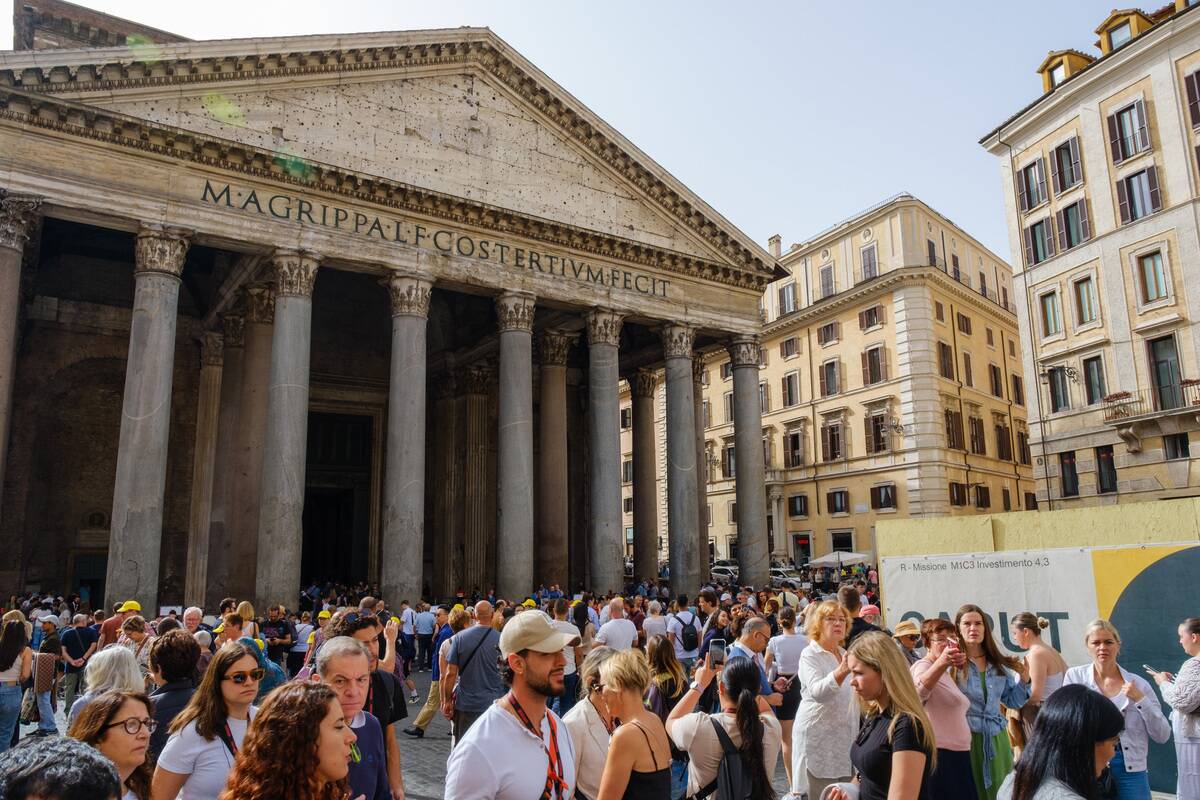
The Pantheon was originally built by Marcus Agrippa in 27 BC and later rebuilt by Emperor Hadrian around 126 AD. Incredibly, its massive dome is, to this day, the largest unreinforced concrete dome in the world.
Engineering techniques used in the dome’s construction allowed for an oculus feature that lets in natural light.
Roman Forum
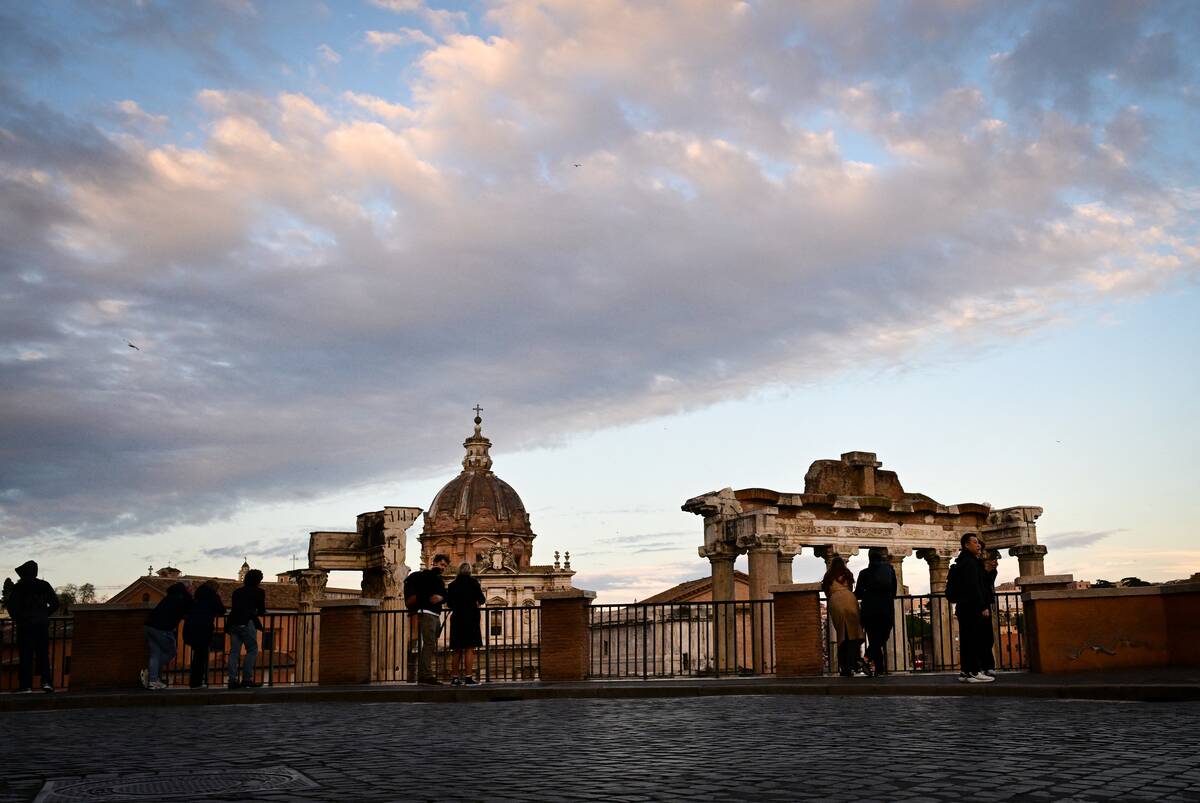
Once the political, religious and commercial heart of ancient Rome, the Roman Forum is located between the Palatine and Capitoline Hills in Rome.
Rather than being one temple or structure, the Roman Forum includes a multitude of buildings, including the Temple of Saturn, Arch of Septimius Severus, and the Rostra platform, from which orators could address the public.
Palatine Hill
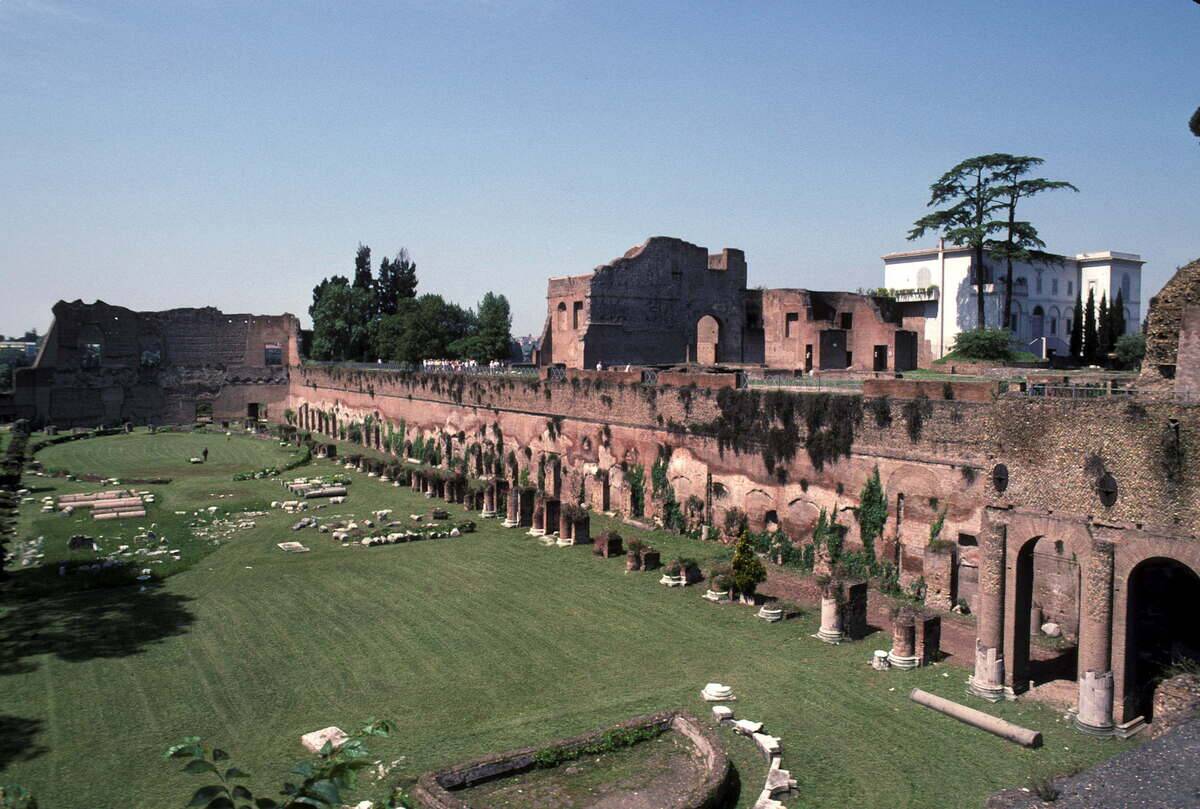
Palatine Hill is one of Romen’s legendary Seven Hills, and as such is steeped in mythology and lore. According to Roman legend, it’s the spot where Romulus first founded Rome in 753 BC.
During the glory days of the Roman empire, it was the residential area for emperors and other wealthy Romans. Ruins of courtyards, lavish halls, and gardens can still be toured to this day.
Baths of Caracalla
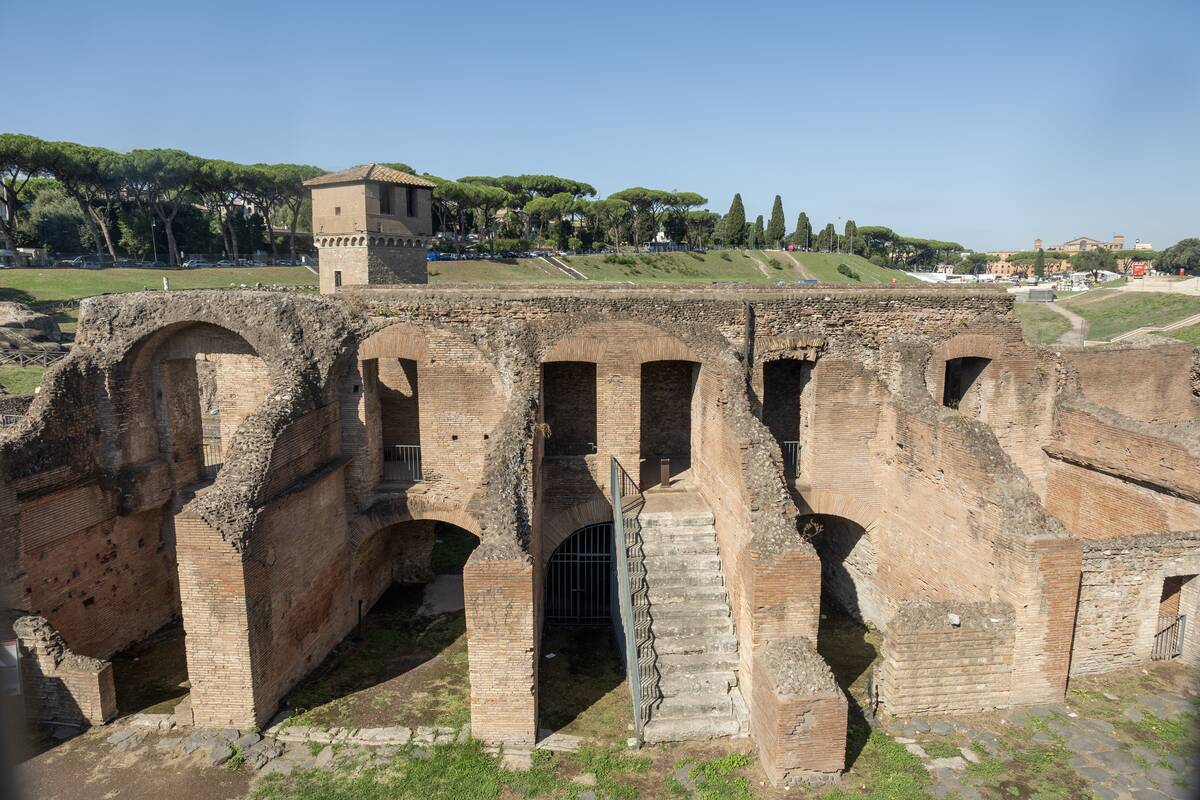
The ancient Romans were known for their love of public bath houses, and one of the best-preserved examples is the Baths of Caracalla in Rome.
These baths, built between 212 and 216 AD during the reign of Emperor Caracalla, were some of the most opulent bathing complexes in ancient Rome. The sheer size of the 33-acre site speaks to its grandeur.
Pompeii
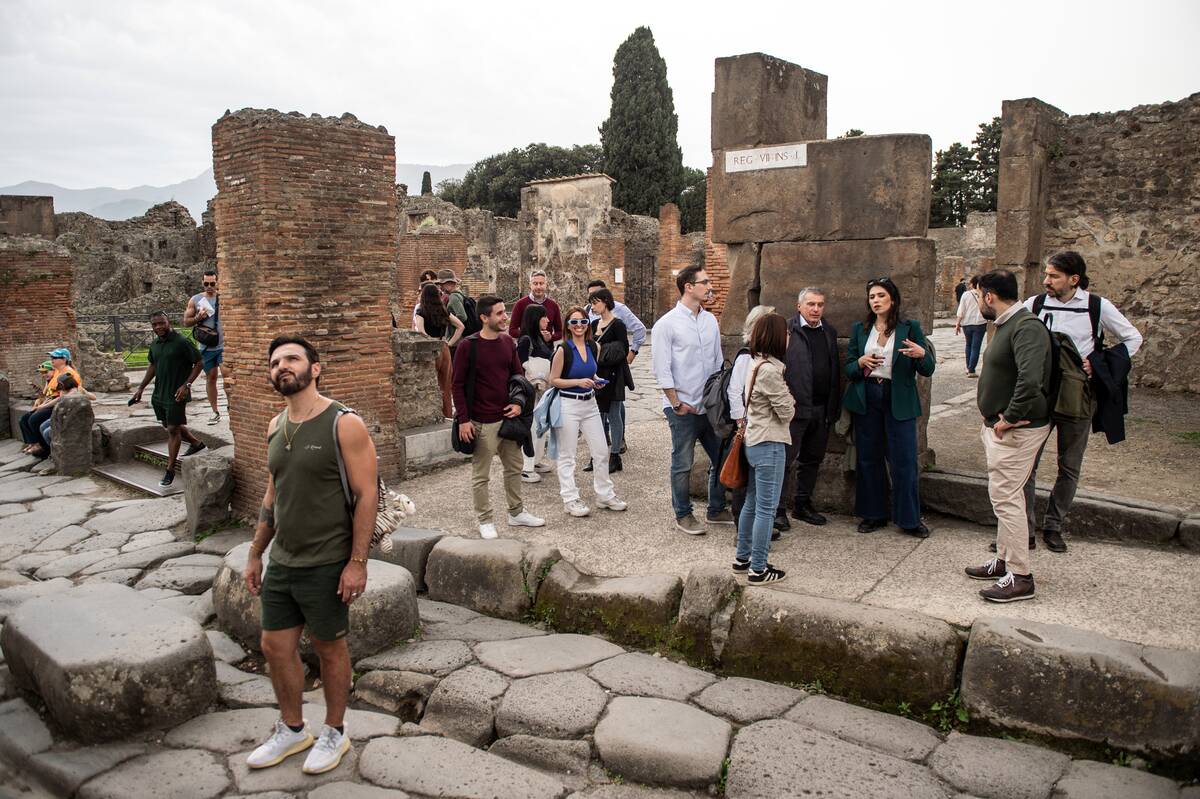
Once a thriving Roman city, Pompeii was infamously buried under volcanic ash and pumice during the catastrophic eruption of Mount Vesuvius in 79 AD.
The ruins of Pompeii sat undisturbed for centuries until they were rediscovered in the 18th century. The well-preserved ancient city is home to various frescoes, mosaics, and other artifacts that give a glimpse of everyday life in ancient Rome.
Herculaneum
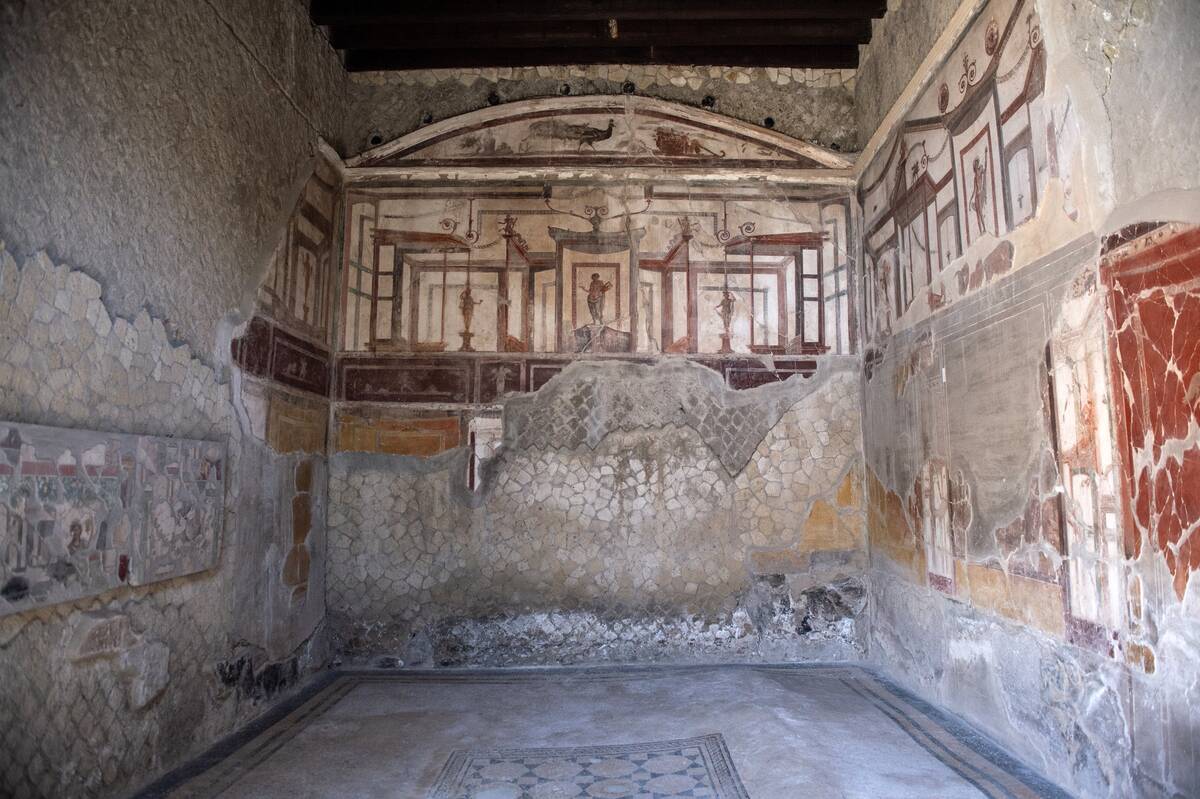
Nearby Herculaneum was destroyed in the same volcanic eruption in 79 AD, and was buried under a deeper level of volcanic material. This of course spelled doom for its ancient inhabitants, but did preserve the city even better than Pompeii.
Because the eruption effectively froze Herculaneum in time, archaeologists have found wooden structures, papyrus scrolls, and even food in near-original condition.
Leptis Magna
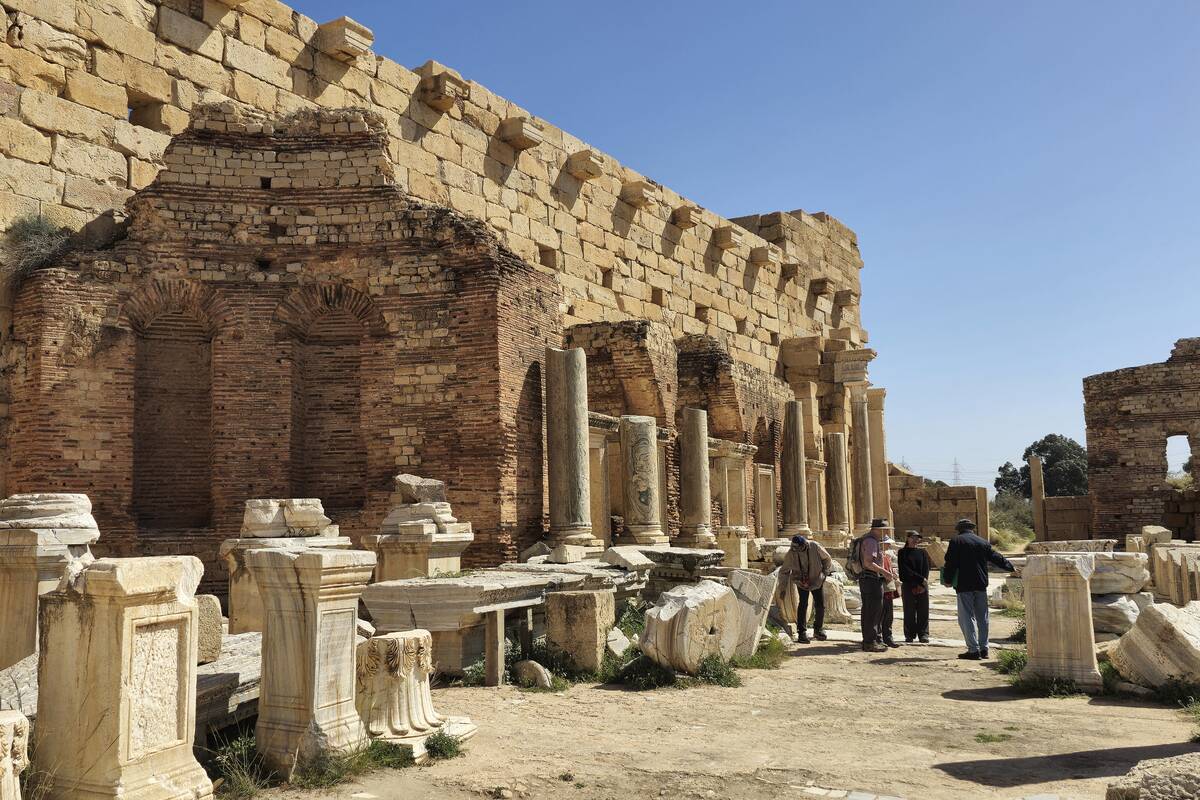
Moving to the Roman outpost of Libya, Leptis Magna was one of the most prominent cities of Roman Africa and had a golden era during the reign of Emperor Septimus Severus.
The city has an incredible collection of ruins, which include a large basilica, marketplace, forum, and a triumphal arch dedicated to Emperor Severus.
Jerash

Known as Gerasa in Roman times, the city of Jerash in Jordan is one of the best-preserved Roman ruins in the Middle East.
Gerasa was part of the Decapolis, a name given to a group of ten cities on the Empire’s eastern frontier. Ancient columns and arches are standing to this day.
Ephesus
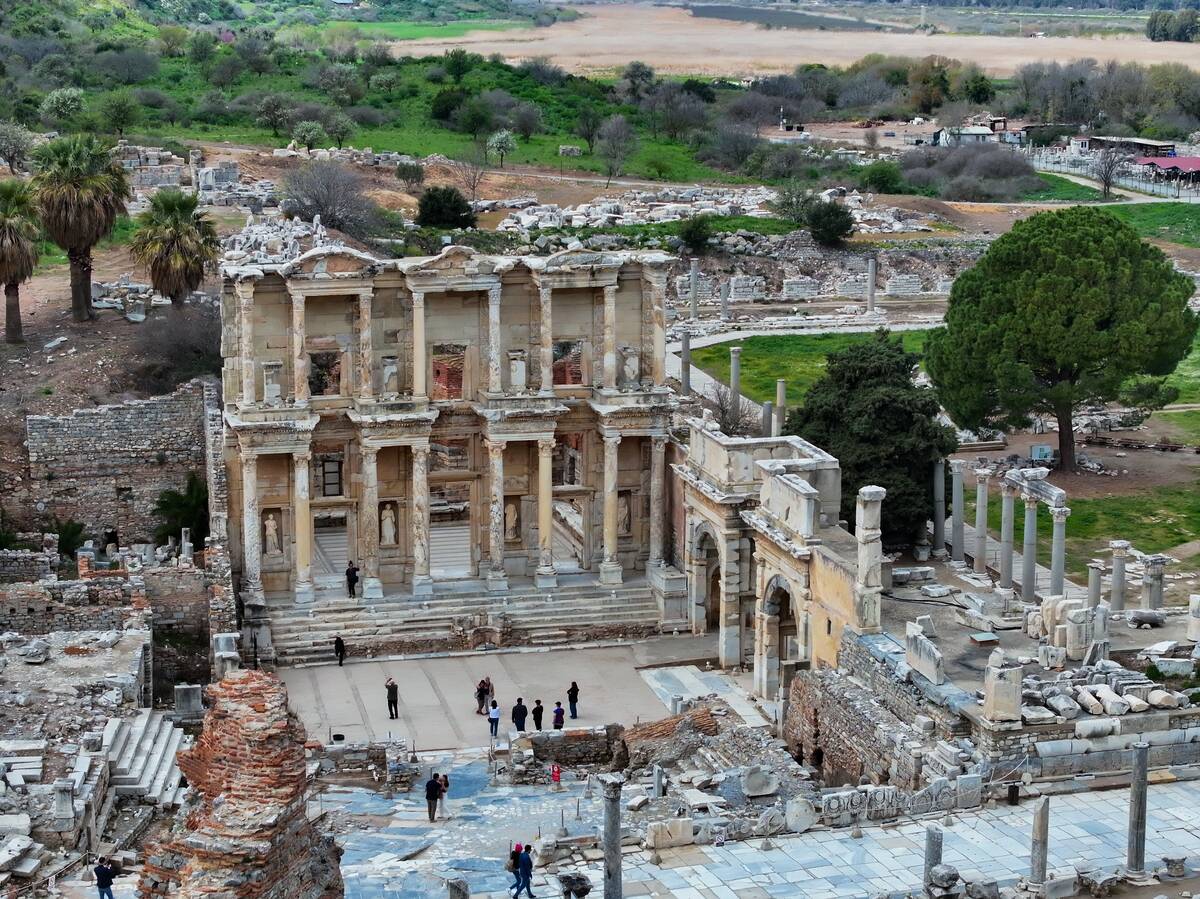
Ephesus existed before Roman rule, but flourished as a Roman outpost and became a major commercial and religious center, known for its massive Library of Celsus, which help thousands of scrolls.
The ruins of the library are still there, along with an ancient theatre with a capacity of 25,000, and a temple dedicated to Hadrian.
Verona Arena
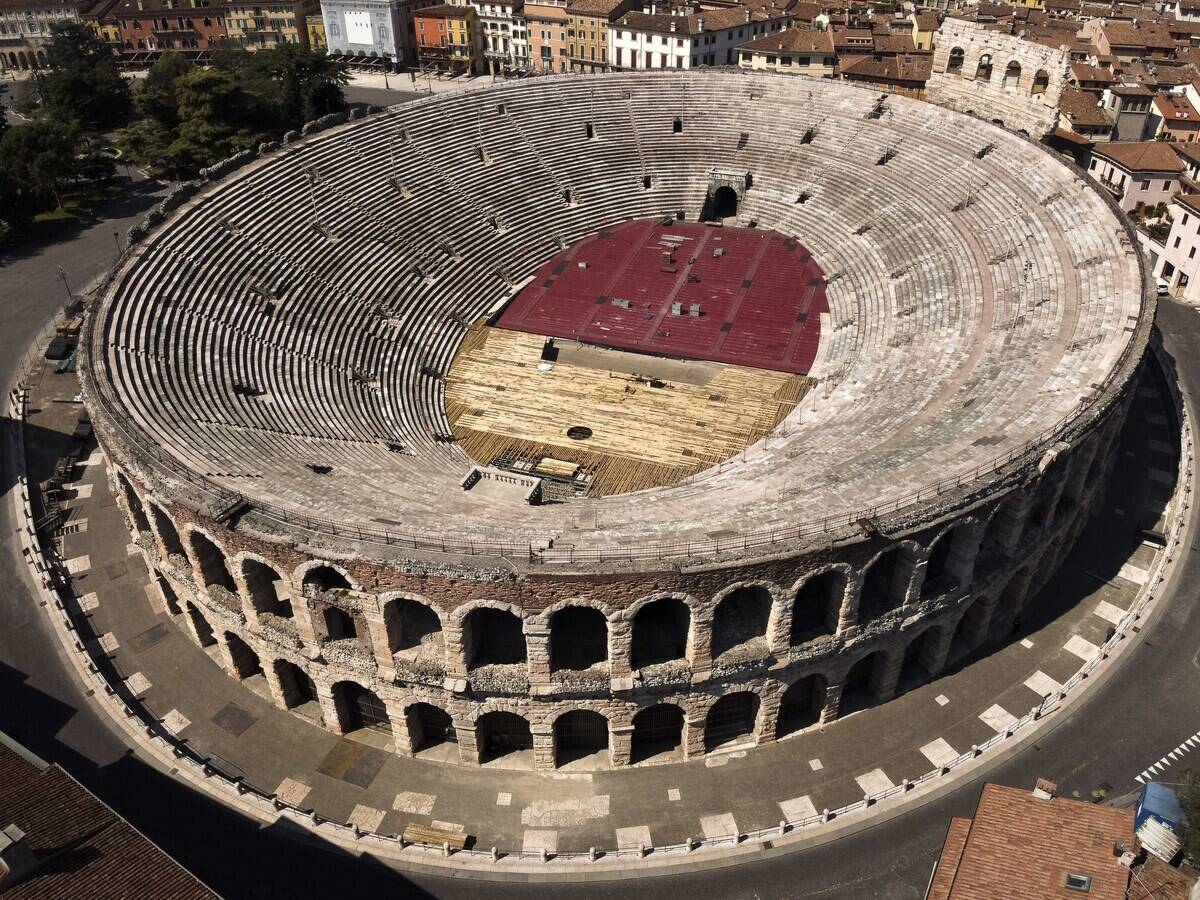
While it isn’t as big as Rome’s Colosseum, the Verona Arena is one of the best-preserved Roman amphitheatres in existence, and is still in use as an entertainment venue today.
At its peak, the limestone facility could hold about 30,000 spectators. Because the seating bowl has remained largely intact, the modern-day Verona Arena is known for its open-air opera performances.
Pont du Gard
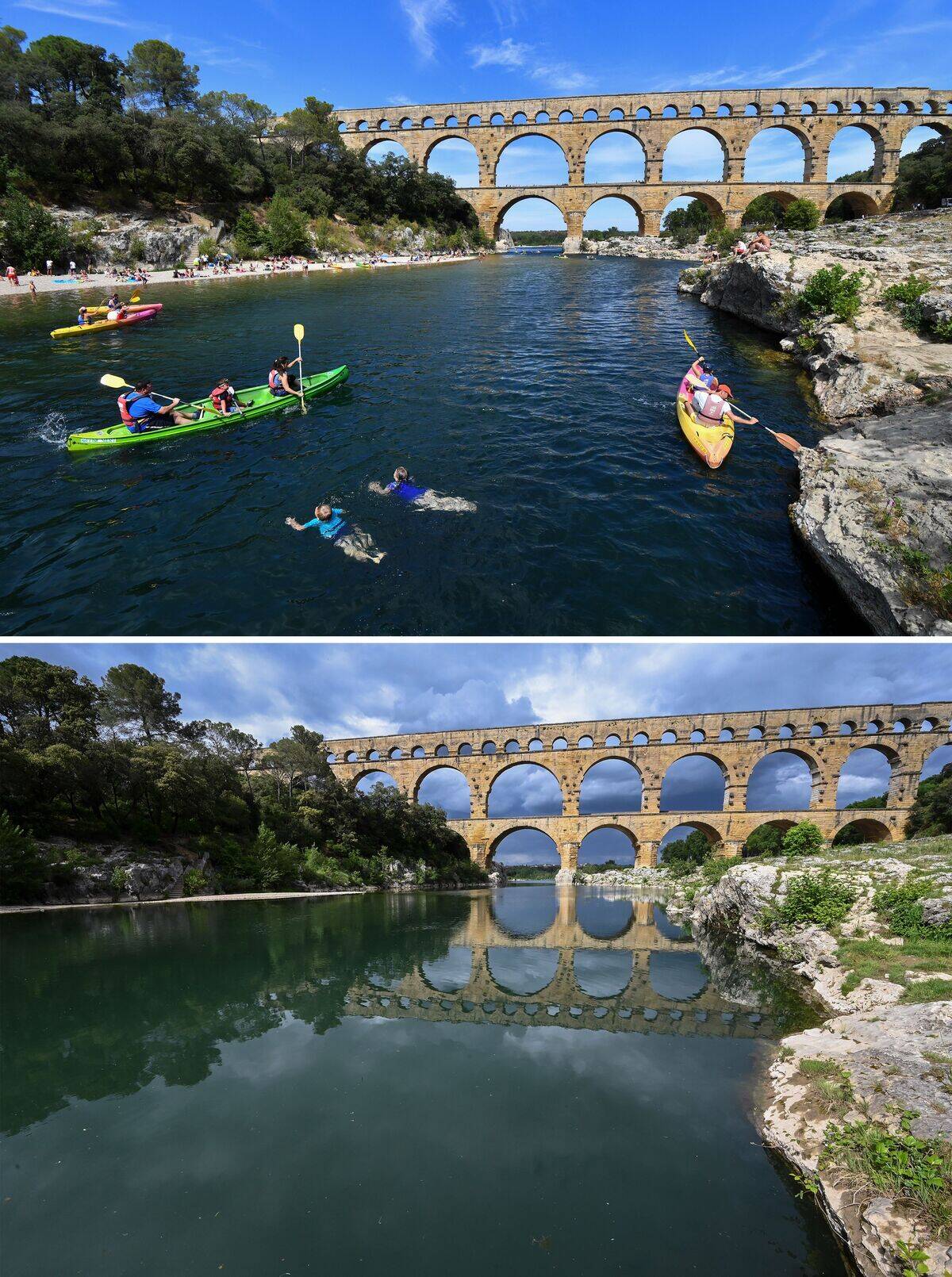
The Pont du Gard is just one of many aqueducts built by the ancient Romans to transport fresh water over long distances, and the towering aqueduct is still mostly intact today.
It spans the Gardon River in southern France and is characterized by three distinctive levels of arches that tower nearly 160 feet high. It’s now a UNESCO World Heritage Site.
Segovia Aqueduct
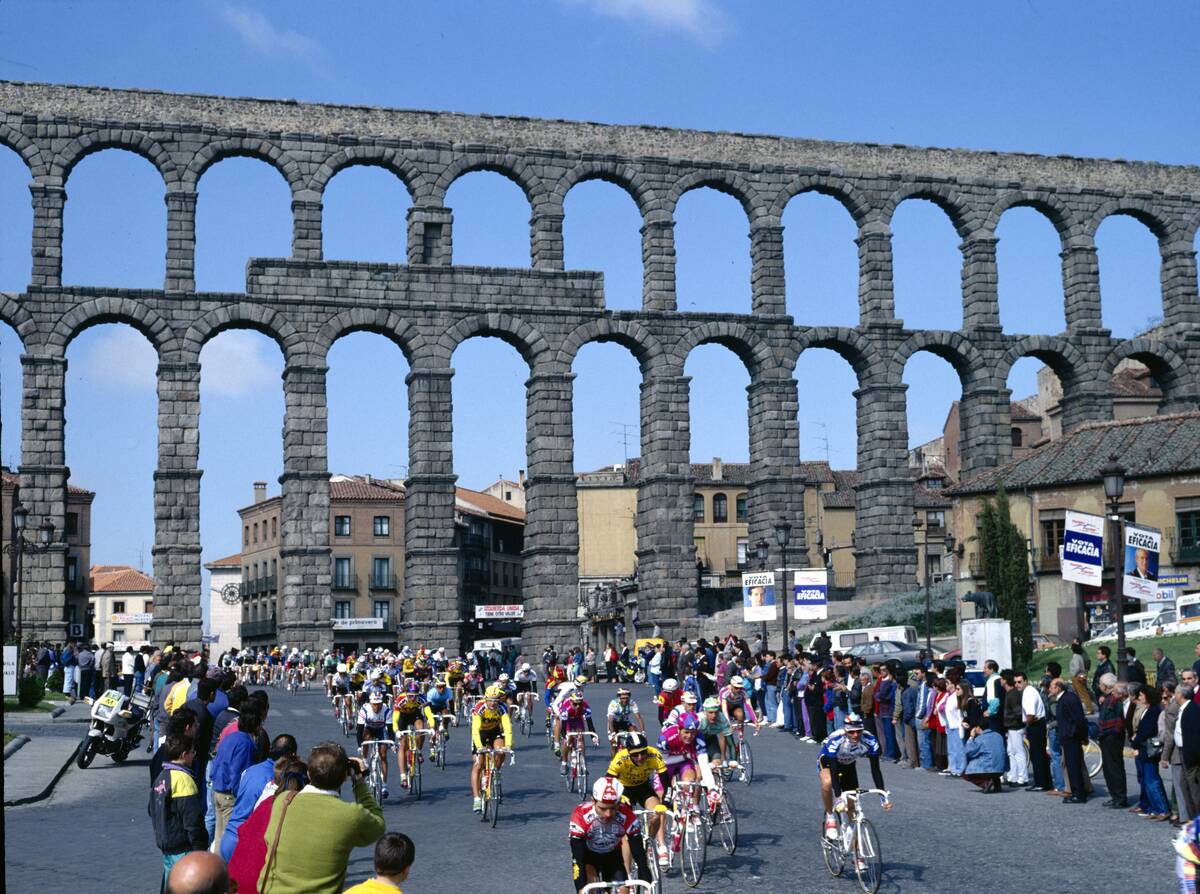
The Segovia Aqueduct is another well-preserved aqueduct, and was built in the 1st or 2nd century AD to bring water from the Frio River to the Spanish city of Segovia.
The aqueduct is more than eight miles in length, and its construction techniques — which didn’t include any mortar — have left it in excellent condition.
Baalbek
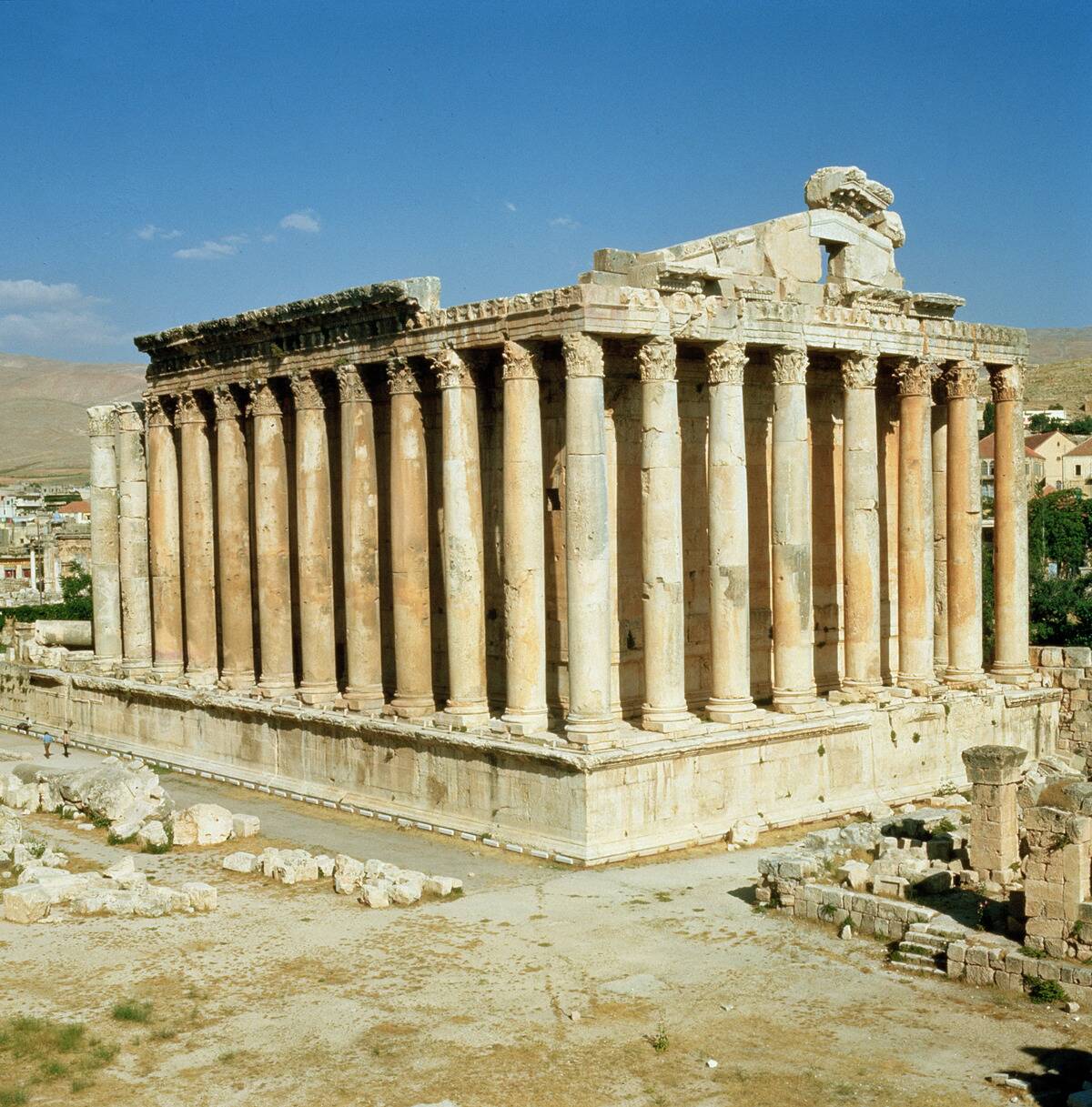
Baalbek, in Lebanon’s Beqaa Valley, was known as Heliopolis in Roman times, and includes various ruins from that era.
Its standout feature is the massive Temple of Bacchus, which took several centuries to construct and served as a major religious center. While it’s similar to other ancient Roman temples, it’s one of the best-preserved examples still standing.
Timgad
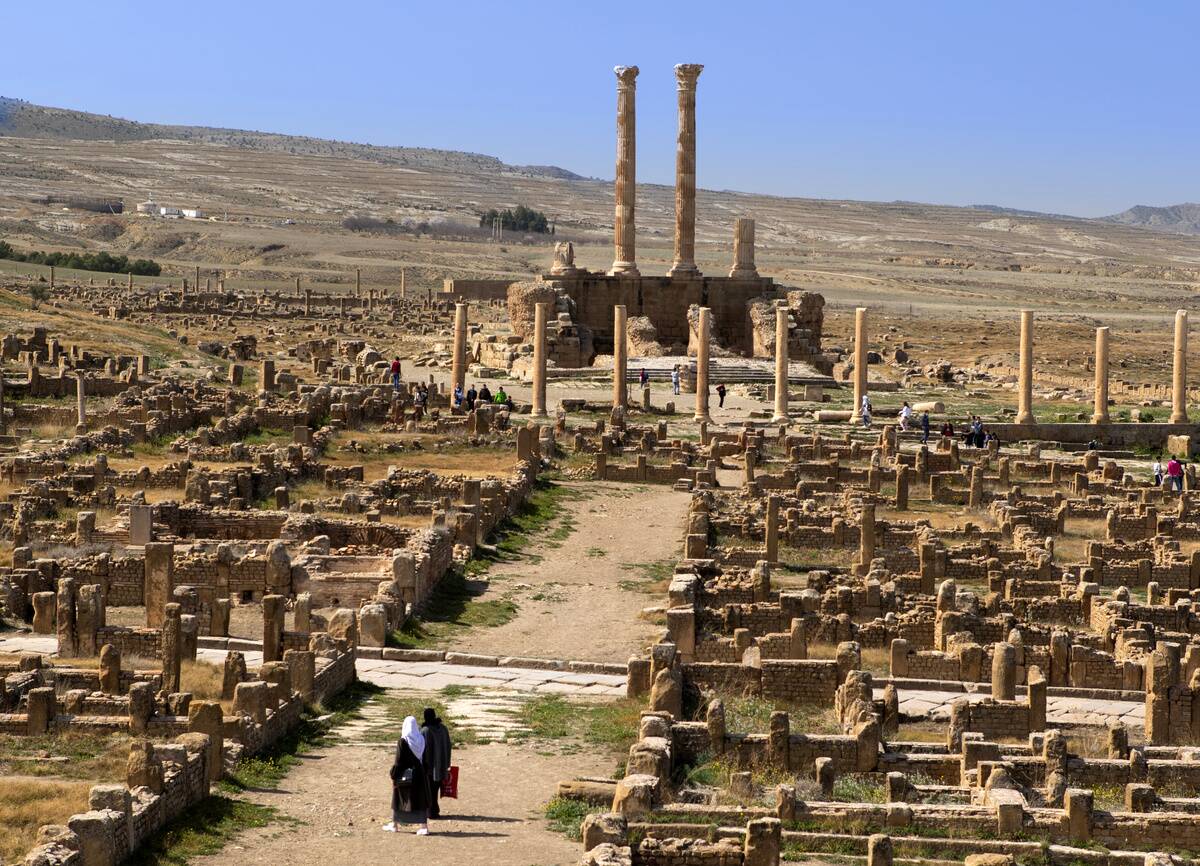
Located in present-day Algeria, Timgad (Thamugadi in ancient Roman times) was a colonial town on the Roman frontier. The city was known for its near-perfect grid layout, which served as a showcase for Roman town planning.
The street system is still largely preserved, along with structures ranging from columns to a triumphal arch to humble dwellings.
Ostia Antica

Ostia Antica, located near the mouth of the Tiber River in Italy, was once Rome’s primary seaport, which made it a commercial hub. It was founded in the 4th century BC and flourished during Rome’s Imperial period.
The city gradually declined with the Empire itself and eventually fell into disuse, leaving a treasure trove of cobbled streets, mosaics, and public buildings behind.
Diocletian’s Palace
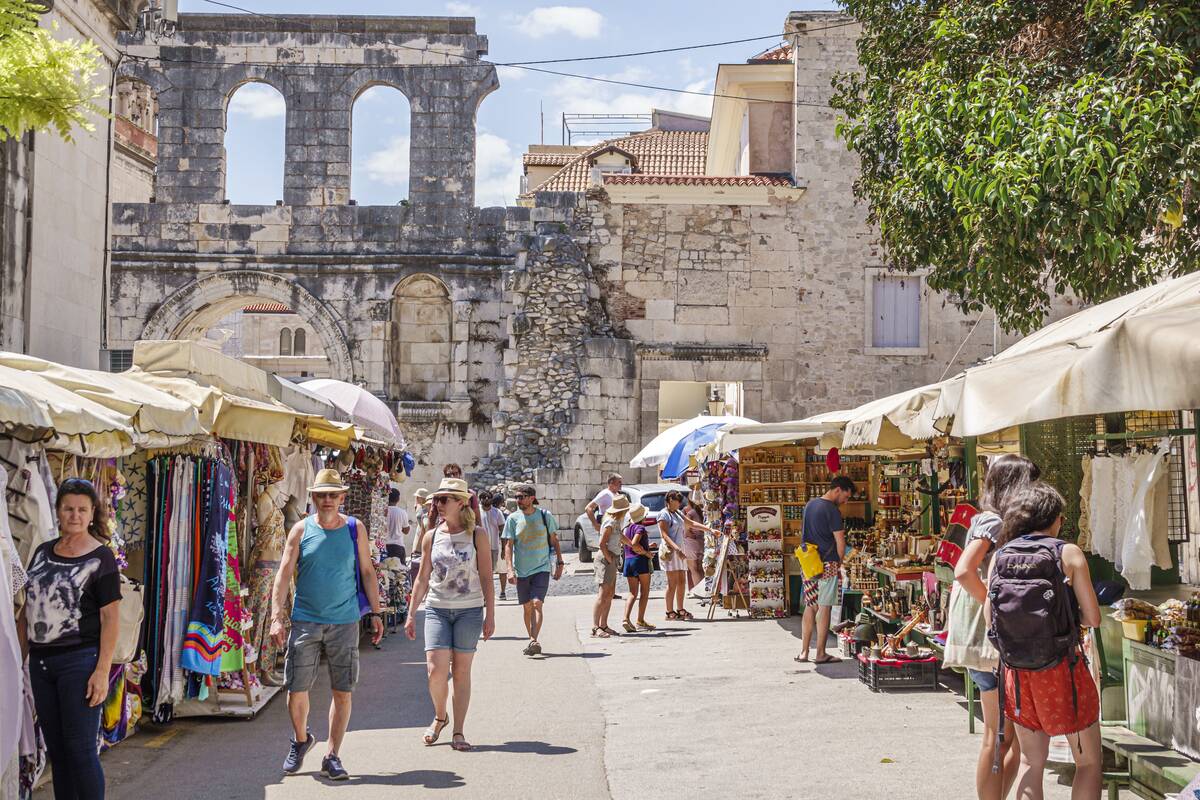
Emperor Diocletian ordered the construction of a palace in modern-day Split, Croatia as a retirement residence. His palace combined elements of a villa, fortress, and administrative center.
It’s an intriguing look at various historical era, as the ruins of the palace blend in with later medieval buildings.
Villa Romana del Casale
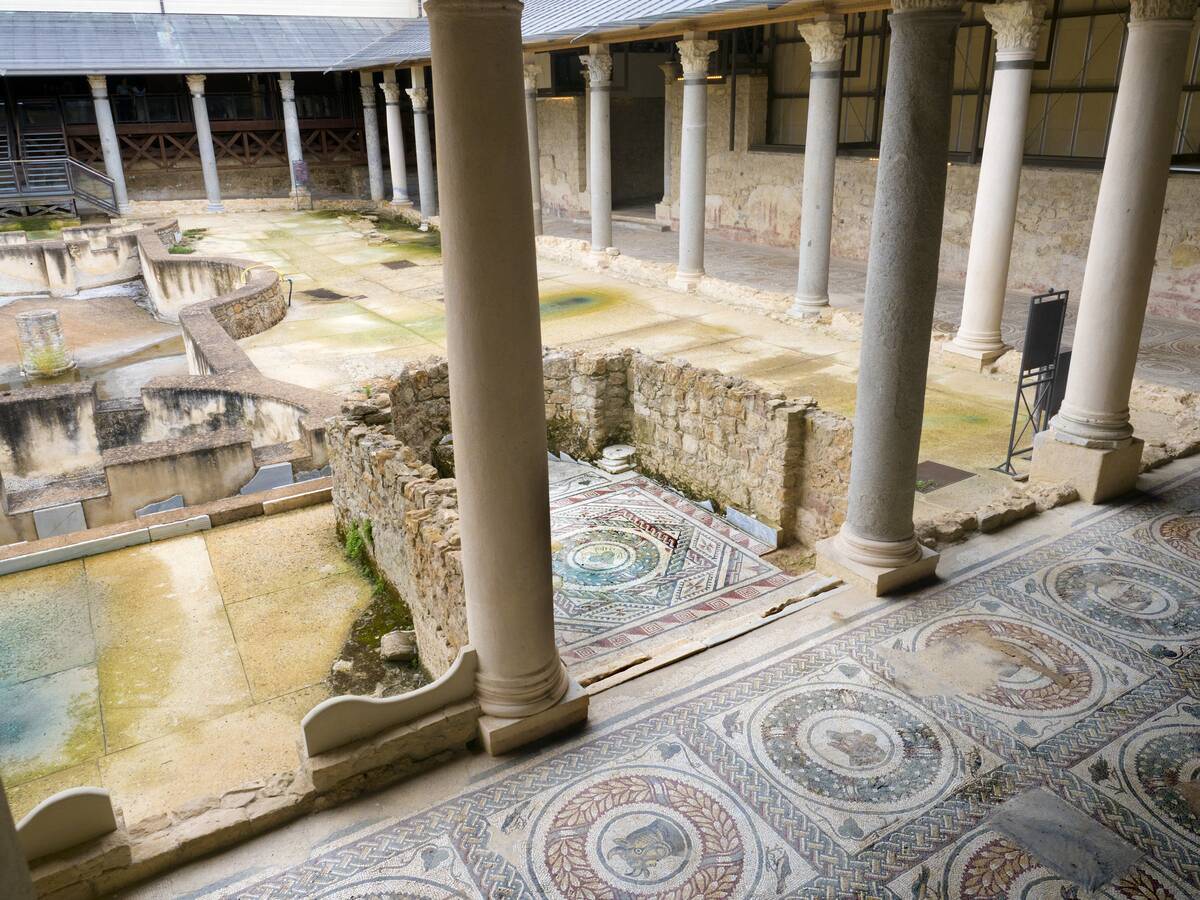
This luxurious villa is located near Sicily’s Piazza Armerina and is well-known for its colorful and intricate mosaics. It’s an example of Roman excess at its finest, spanning over 40,000 square feet.
The villa was built around the 4th century AD and was later buried by landslides, only to be rediscovered in the 20th century.
Hadrian’s Wall
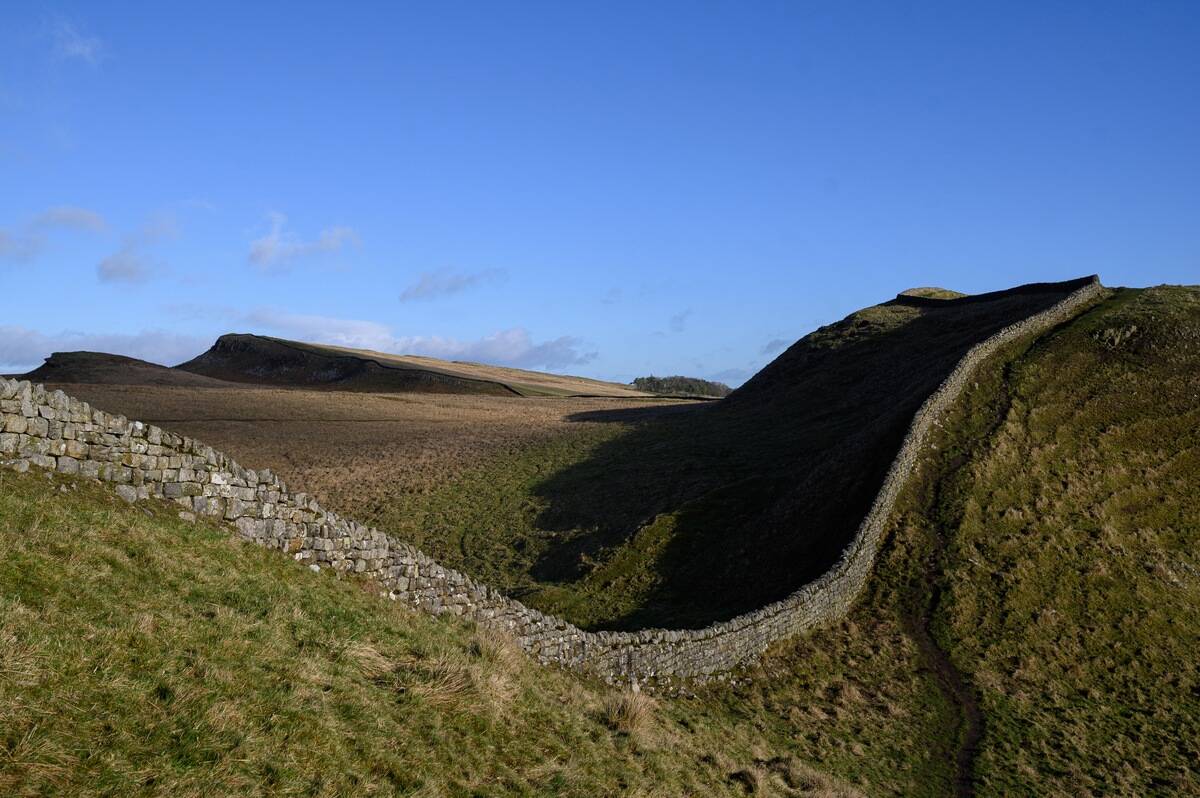
This landmark of the English countryside was built under Emperor Hadrian around 122 AD, and marked the northern boundary of Roman Britain.
Spanning more than 70 miles from coast to coast, the wall included forts, small castles, watchtowers and settlements. Many parts of the wall are still standing to this day.
Theatre of Orange
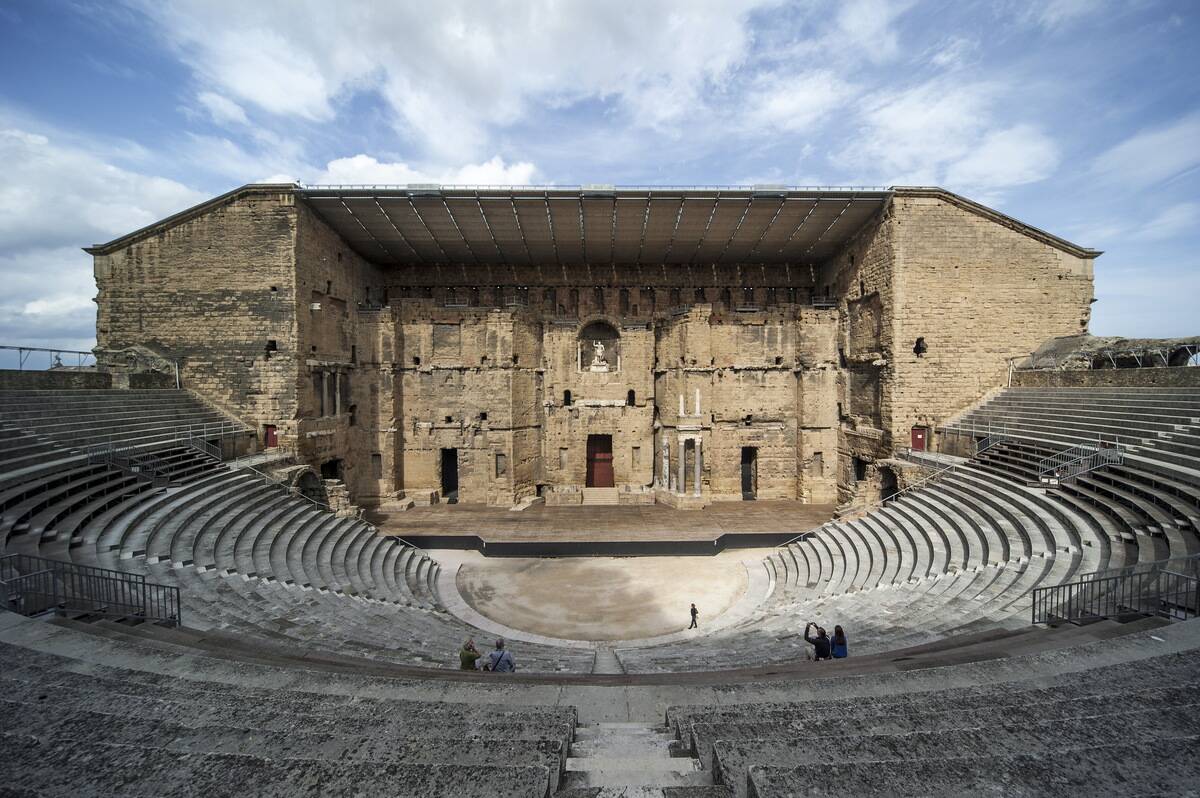
This structure in southern France remains one of the most complete Roman theatres still in existence. Its original stage, which stands over 100 feet tall, is remarkably intact and is still in regular use for performances.
While it was built on a smaller scale than some other Roman venues, it could still accommodate over 7,000 spectators.



